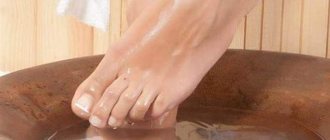Any bathhouse attendant is familiar with a burn in a bathhouse. The bathhouse is a strong force, here lives the fire in the stove, boiling water, red-hot iron. The bathhouse not only heals, but can also punish those who take too many risks, forgetting about basic safety rules.
When all the elements: water, flame, hot air are combined in one place, you need to be especially attentive and careful. Because you can get a skin burn from everything that is in the bathhouse.
What is a burn
According to the definition, a burn is damage to skin tissue that is caused by exposure to high temperature.
There are 4 degrees of burn in total.
Skin redness
Symptoms: redness of the skin, pain, burning, slight swelling. The upper layer of the skin, the epithelium, is damaged. Recovery occurs in two to five days. The damaged epithelium peels off, leaving no traces of burns on the skin.
Blistering of the skin
Symptoms: redness of the skin, pain, burning, the appearance of small blisters with liquid on the skin. The epithelium is affected up to the germ layer. After two to three weeks, the wound heals due to the self-healing of the remaining germ layers of the skin.
Death of skin tissue
Damage to all layers of the epidermis and dermis. Symptoms: blackening of the skin, formation of huge blisters
Charring of fabrics
Death of all tissues and skin. The muscles and bones were extremely damaged by the fire, literally charred.
Of course, a sane person cannot get the third and fourth stages of a burn in a bathhouse, but the first two happen quite often.
So how can you get burned in a bathhouse? What causes burns? How to avoid them?
Treatment of burns at home (I and II degree)
To treat I-II degree burns, both folk remedies and medications are used.
ethnoscience
Pumpkin ointment
Pumpkin ointment has analgesic, anti-inflammatory, drying, wound-healing and antiseptic properties.
To prepare a useful product, take a ripe pumpkin, peel and seed it, and grind it using a blender, meat grinder or grater. We put pumpkin puree on a piece of bandage, apply it to the burn, and fix it with a plaster. After 2 hours, remove the bandage and apply a new one. We do this 2-3 times a day.
pumpkin juice
When a burn occurs, the question often arises: “How to relieve pain?” “Very simple,” answer admirers of traditional medicine. You just need to make pumpkin juice.
Take a ripe pumpkin, peel it and remove seeds, squeeze out the juice using a grater, meat grinder, blender or juicer. Cut off a piece of bandage, dip it in juice, and lubricate the wound. We repeat the procedure 3 times a day.
Cabbage-egg ointment
Cabbage and egg ointment is known for its restorative, nourishing, anti-inflammatory, analgesic, and antimicrobial properties.
To prepare a miraculous balm, we arm ourselves with:
- cabbage leaf – 1 pc.;
- egg white – ½ pc.
Using a blender or grater, turn the cabbage leaf into puree. In a separate container, using a mixer, beat the egg whites until thick foam. Combine the ingredients and mix well. Apply the mixture to a piece of bandage, apply it to the skin, and fix it with a bandage. After 1–2 hours, remove the bandage and apply a new one. We repeat the procedure 3 times a day.
Cocktail made from soda and curdled milk
Soda and yogurt are a duet that relieves swelling, redness, itching and pain.
To prepare a cocktail, we stock up on:
- baking soda - 1 tbsp. l.;
- homemade curdled milk - 2 tbsp.
Pour yogurt into a container, add soda and whisk the mixture thoroughly. Take a piece of bandage, dip it in a cocktail, apply it to the skin, and secure it with a band-aid. Remove the bandage after 12 hours. We repeat the procedure one more time, after which we notice that there is no trace of the burn left on the skin.
Oak Elixir
The bark has anti-inflammatory, soothing, protective, wound-healing, antiseptic, nourishing, drying and analgesic properties.
To prepare oak decoction we arm ourselves with:
- crushed oak bark - 3 tbsp. l.;
- water – 1 l.
Place the bark in a saucepan, add water and mix the ingredients. Place the container on the stove, cover the container with a lid and cook the potion for 10 minutes. Remove the pan from the stove, wrap it in a towel and wait another 30 minutes. And then filter the broth through cheesecloth. We rinse the damaged skin with the potion and make lotions.
What else can I use to anoint the wound? You can also use:
- carrots (chopped on a grater);
- applesauce;
- lingonberry pulp;
- rowan juice;
- homemade cottage cheese;
- potato starch;
- raw potatoes (chopped on a grater);
- brine;
- chicken, goose and quail eggs;
- green and black tea;
- aloe juice;
- sea buckthorn oil;
- St. John's wort oil;
- tincture of calendula, elm, aspen;
- gruel from burdock leaves;
- plantain leaves;
- fresh blueberries;
- honey.
Remember, you need to be treated wisely, having first studied the properties of a particular product. In addition, use folk remedies only for closed wounds.
Flame burn
This case occurs quite often. Any stove in a bathhouse is heated with wood, therefore a fire burn can be obtained by throwing a new portion of firewood into the stove. It’s worth distracting yourself a little, looking at the flame, and that’s it – the red flower has done its job.
You can protect yourself by wearing ordinary gloves.
Make it a rule to wear work gloves when performing any work in the bathhouse.
Brick screen for a metal stove: for what, from what and how
To make bathing procedures safe and comfortable, it is necessary to install a protective screen around the stove body - a fence. Protective fences for sauna stoves must be made of fire-resistant and safe materials that do not emit harmful chemicals when heated. Of course, brick is best suited for these purposes.
Fencing sauna stoves with a brick screen
You can easily make a brick fence yourself. It can be laid in a continuous layer as in this photo, but this option significantly increases the required time to warm up the steam room and, accordingly, the amount of fuel consumed. This option is considered more acceptable for the atmosphere of a Russian steam room - you can achieve a gentle temperature (up to 70 ° C), and if the stove in the stove is closed, then the steam should be “light”. But for a sauna, this option is somewhat inconvenient from the point of view that you will actually have to spend more time and firewood preparing the steam room, but being in a room where the stove heats and does not burn even at high temperatures is much easier and more pleasant than where The oven is not protected by a screen.
Brick fence for the sauna stove
Therefore, some bath attendants, based on operating experience, recommend laying bricks in a quarter, half, or in a checkerboard pattern, leaving “windows” between the bricks as shown in these photos. This method of laying the protective screen will provide both safety and will not have a significant effect on reducing the heat level in the steam room. It should be taken into account that the distance from the stove to the brick fence is not critical and can be 3–5 cm.
Fencing sauna stoves with a brick screen
The brick heats up slowly and gradually accumulates heat, but then releases it to the steam room for a long time, acting as an additional heat accumulator. The brick enclosure of the stove converts intense heat into lighter heat, creating comfort in the bathhouse.
For laying a brick protective fence, it is better to use clay-cement mixtures with a cement content of 5–10% - such masonry joints will not be washed away by water and will not crack from high temperatures.
Steam burn
You can get such a burn if you put water into the heater incorrectly. A sharp stream of hot steam can burn you anything. Hand, body, head, face. To protect yourself from painful sensations, it is better to wear a bath mitt when applying the parka.
And also do not splash a full ladle of water. The movement should be sharp and fast.
Every home has communication lines and cables - they will be protected by a fire retardant compound
0
Every modern building has numerous cable lines for transmitting electricity or communication signals. Such communications intertwine the entire room, and their length can reach hundreds of meters. Often the cause of a fire is a short circuit, during which the insulating material of the wires melts. Reliable fire protection of cable lines helps prevent fires from igniting and spreading throughout the building. Basic methods of fire protection for cable communications Fire protection using special coatings Fire protection for cable lines Fire-resistant coatings are available in the form of paint, paste or mastic. The substances from which these products are made prevent the cable from catching fire. When suddenly heated, fire-resistant paint “swells”, increases in volume by 10-40 times, releases non-flammable inert gases and turns into a non-flammable alloy. At the same time, heat is absorbed, temperature decreases and attenuation occurs. The composition of such coatings may vary depending on operating conditions. Protection of communications using ducts Fire protection of open cable lines is often carried out using special ducts. This method is considered the most reliable and is used in industries and enterprises with increased fire and explosion hazards. Such a box is made of fire-resistant boards and can be located inside or outside the building. The design allows cable communications to remain operational for a long time even at elevated temperatures. There is also the possibility of free access to communications in case of need for various repair or reconstruction work.
Burn from hot objects
The bathhouse is a kingdom of heat! Consequently, everything in the bathhouse gets quite hot. When they build a bathhouse, everything metal is “hidden” deep into the wood. And you must go to the bathhouse without metal jewelry.
Most bath accessories are wooden. Have you ever wondered why?











